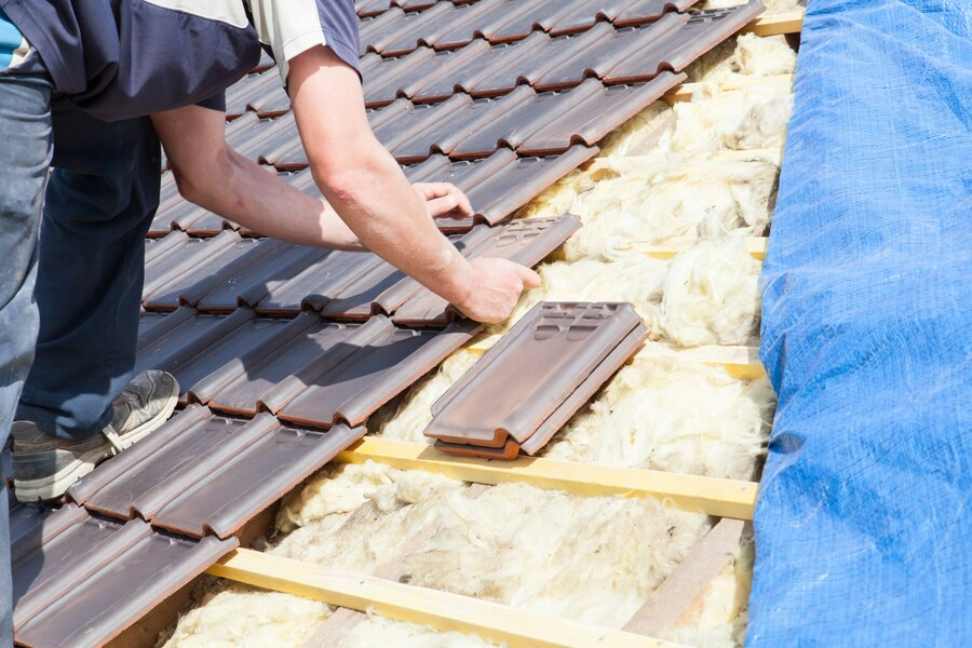Your roof – the stalwart guardian shielding your home from the elements. But even the sturdiest roofs eventually succumb to time and wear. This article empowers you, the homeowner, to make informed decisions about your roof’s health. We’ll delve into the signs that indicate a roof replacement might be necessary, explore the process involved, and help you determine if a complete overhaul is the right course of action for your home.
More Than Just Leaks: Signs Your Roof Needs More Than Repairs
While a minor leak might be addressed with a patch, extensive damage or an aging roof warrant a more comprehensive solution: a roof replacement. Here are some key indicators that a roof replacement might be on the horizon:
- Widespread Damage: Missing or broken shingles in large areas, extensive cracking or warping of roof components, and signs of animal infestation all point toward significant deterioration. Patching individual issues might not be enough to address the underlying problems.
- Age of Your Roof: Most roofs have a lifespan of 15-20 years, depending on the material. If your roof is nearing or exceeding this age, even if you haven’t noticed major damage, a roof replacement might be a wise preventative measure.
- Deteriorating Flashing: Flashing – the metal strips that seal around chimneys, vents, and other roof penetrations – plays a crucial role in preventing leaks. Curling, rusting, or cracked flashing necessitates a roof replacement to ensure proper water protection.
- Moss or Algae Growth: While not an immediate threat, excessive moss or algae growth on your roof can trap moisture and accelerate shingle deterioration. A roof replacement with proper ventilation solutions can help prevent future growth.
Planning for a New Roof: The Roof Replacement Process
A roof replacement is a significant undertaking, but with proper planning, the process can be smooth and efficient:
- Consult a Reputable Roofer: Get quotes from several licensed and insured roofers experienced in your specific roof type. Ask about their qualifications, warranty policies, and references.
- Schedule a Thorough Inspection: A qualified roofer will conduct a detailed inspection to assess the extent of the damage and recommend the best course of action, whether it’s repairs or a roof replacement.
- Choose Your Materials: Roofers can advise on the best roofing materials for your climate, budget, and aesthetic preferences. Consider factors like durability, energy efficiency, and potential noise reduction.
- Understanding the Costs: A roof replacement is an investment, but the cost can vary significantly depending on the size and complexity of your roof, the chosen materials, and labor costs. Factor in potential savings from increased energy efficiency and consider financing options if needed.
Considering Siding Replacement: If your siding – the exterior cladding of your home – is also nearing the end of its lifespan or doesn’t complement your new roof, consider replacing it alongside the roof for a complete exterior makeover.
Conclusion: A Wise Investment in Your Home’s Future
A roof replacement is a significant decision, but one that can safeguard your home for years to come. By understanding the signs that necessitate a replacement, planning the process meticulously, and partnering with a reputable roofer, you can ensure a smooth and successful project. A new roof not only protects your home from the elements but also enhances its curb appeal and potentially increases its value. So, invest in your home’s future – consider a roof replacement and enjoy the peace of mind that comes with a solid roof overhead.
Read More:
- Exploring the Realm of Free Video Converters
- Watch New Movies On GoMovies! Is It Safe To Use GoMovies?
- Adventure Tourism: Thrilling Activities for the Modern Traveler

